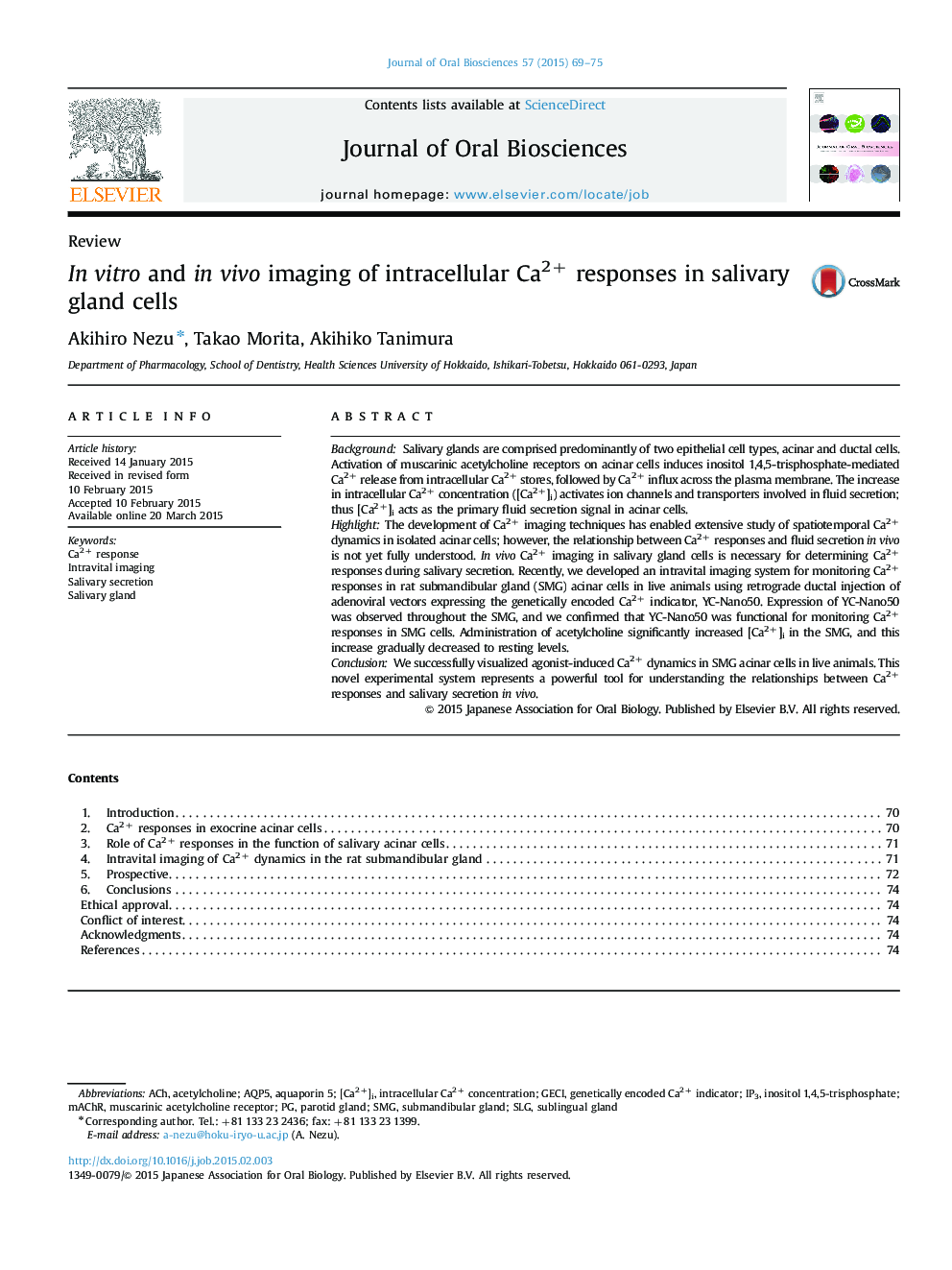| کد مقاله | کد نشریه | سال انتشار | مقاله انگلیسی | نسخه تمام متن |
|---|---|---|---|---|
| 2776798 | 1152636 | 2015 | 7 صفحه PDF | دانلود رایگان |

BackgroundSalivary glands are comprised predominantly of two epithelial cell types, acinar and ductal cells. Activation of muscarinic acetylcholine receptors on acinar cells induces inositol 1,4,5-trisphosphate-mediated Ca2+ release from intracellular Ca2+ stores, followed by Ca2+ influx across the plasma membrane. The increase in intracellular Ca2+ concentration ([Ca2+]i) activates ion channels and transporters involved in fluid secretion; thus [Ca2+]i acts as the primary fluid secretion signal in acinar cells.HighlightThe development of Ca2+ imaging techniques has enabled extensive study of spatiotemporal Ca2+ dynamics in isolated acinar cells; however, the relationship between Ca2+ responses and fluid secretion in vivo is not yet fully understood. In vivo Ca2+ imaging in salivary gland cells is necessary for determining Ca2+ responses during salivary secretion. Recently, we developed an intravital imaging system for monitoring Ca2+ responses in rat submandibular gland (SMG) acinar cells in live animals using retrograde ductal injection of adenoviral vectors expressing the genetically encoded Ca2+ indicator, YC-Nano50. Expression of YC-Nano50 was observed throughout the SMG, and we confirmed that YC-Nano50 was functional for monitoring Ca2+ responses in SMG cells. Administration of acetylcholine significantly increased [Ca2+]i in the SMG, and this increase gradually decreased to resting levels.ConclusionWe successfully visualized agonist-induced Ca2+ dynamics in SMG acinar cells in live animals. This novel experimental system represents a powerful tool for understanding the relationships between Ca2+ responses and salivary secretion in vivo.
Journal: Journal of Oral Biosciences - Volume 57, Issue 2, May 2015, Pages 69–75